Some Thoughts About Teaching and Learning
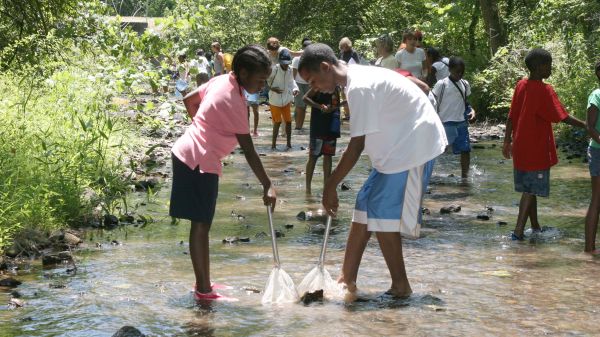
Environmental Education is a verb! Like the article “Math is a Verb,” I have discovered environmental education is learning by doing. Jane Eller, the former director of the Kentucky Environmental Education Council has said time and again: “Environmental Education is good education!” I agree wholeheartedly!
To amend that, good environmental educators recognize there is much to be learned from students. As a long-standing educator and environmental educator I reflect on the process and who has taught me. I have found that over time K–16 teachers have impacted my teaching and learning styles. They have made a profound impact on my life.
Teachers have often told me environmental education helped them discover more and more about themselves and their relationship to the natural world. Their perspectives often merged concepts and skills with the realities of working with their students. Sometimes I listened, other times their ideas would creep up on me later. In reflection I would say to myself: “ That is such a brilliant idea! I wished I would have embraced that earlier." Their inspiration provided me with the following insights about environmental education teaching and learning.
-----
- Nature seems to change us immeasurably beyond the boundaries of our ability to speak and write about it.
- We do not learn the same way; we do not hear the same things; and, we do not feel the same way as others. While we all learn, see, hear, and feel, we do them on our own terms. In nature…prescribing an experience will not necessarily mean others will see, hear or feel what we intended. Better yet…people when immersed in nature do so on their own terms, not ours.
An Illustration: We provided a cemetery study for teachers-to-be in what I discovered was one of the oldest in our community The first time we took a field trip I asked them to explore, imagine, write about what they were seeing, hearing, feeling, if they were so inspired. I encouraged them also to record questions that arose on this first visit.
We returned to the classroom and we were seated around large tables where we placed pieces of newspaper print that covered the surface. I asked them to only ask questions and share with the group one question at a time. These were recorded on the newsprint until all of the questions they had were asked and shared. We had more than 200 questions. It was a marvelous collection of randomly shared inquiries.
The first inclination was when a question was posed by someone, to blurt out an answer. I assured them we would answer theses over time, but we wanted to see the breadth and depth of what that experience evoked in them.
We classified the questions according to their scheme of how the items fit together. Students then chose to explore the questions within a classification. These were senior education majors who asked me, how would they be able to answer the questions. They had taken history, science, and social science classes in their undergraduate general education curriculum. One would assume the skills of seeking answers were skills they had already acquired. Since they were troubled about how they should proceed, we talked about what resources they might be able to use. We also made multiple visits to the cemetery site because they now had a purpose for exploring the cemetery. Interestingly, they also found each visit created a whole new set of questions.
At the end of the semester they shared what they had found. They were engrossed in the presentations and asked more questions of those presenting their findings. They listened intently to one another as each class period swiftly expired.
Each person contributed to the wisdom of the group. We learned from one another. These teachers-to-be found that for each question they may have answered they could generate many more questions. They had become a “learning community,” social scientists, historians, writers, and researchers.
The parameters of this experience were provided, but in the end these students began to understand the concept of community, history, resources, and the science process skills. Some believed they would try to do this in their hometown. Most importantly, it was the first time they had been invited to learn and responded splendidly.

- Students in nature are more impacted by a teacher who is as excited. If an experience is valuable, a teacher must be enthusiastic and eager to explore with the students. The best teachers I have had are those who allowed me to experience/discover.
An Illustration: Recently I provided an on-line class for six, high school students. The activity was Tragedy of the Commons. As we processed the experience and I solicited from them what the tokens were in the game (poker chips), one young man exuberantly shared his thought. As many times as I have used this activity with students and adults, it was the first time I had heard his viewpoint shared to any group. The game brought out his idea and insight. Later his teacher, a former environmental education student of mine told me, “This child never says much in class”. She was pleased this student made this amazing contribution.
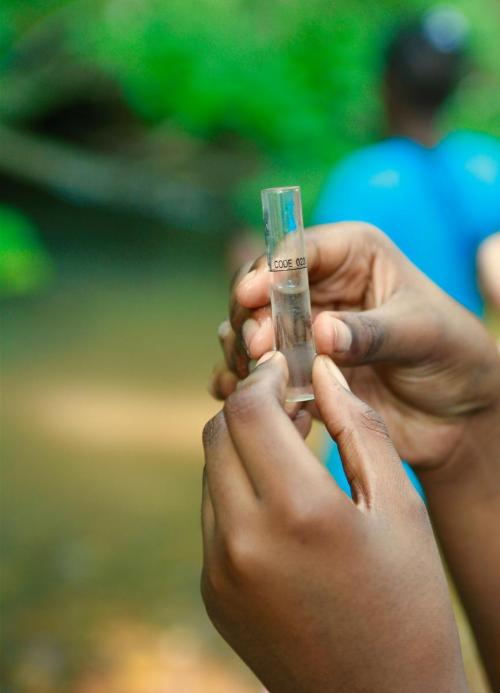
- We provide activities for students in the out-of-doors that can never be replicated in subsequent classes. Each group is different, bring varied points of view, and approach a learning experience distinctly. The same activity used again is never the same because the context is always different.
- If we are inclined to name and tell people what they are seeing, hearing, feeling and learning in nature, be less willing!
An Illustration: As a person who loves birds coming to our feeders, I remembered being with avid birders who point out things to me that I do not see or hear. When I tell them I did not see or hear what they saw, they tell me, I missed it. I could not see and hear what they did, when they did, knew what they knew, a real "bummer." However I have several bird feeders now and have watched them closely through my vantage point inside the house I have learned much over time because my interest was piqued and I sought to learn more on my own terms, in my own time. One thing I must remind myself however is to remember the process I went through and not be overzealous when someone shows an interest in birds on my feeders.
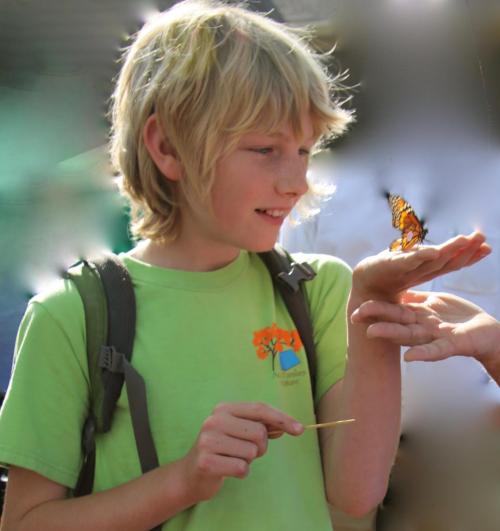
- If we feel we can structure or incrementally create a time in nature for others, we must remember it is not what we know that is important, it is their experience in nature that matters most.
An Illustration: When I was an elementary student at Fairhill School in Philadelphia, PA we had an astronomer who would come to our daytime class to tell us about the night sky. Sometimes he had some visuals to share and other times he drew on the blackboard to show us constellations and stars. He was excited in his way, but after each of his sessions I did not feel any passion for astronomy. I could not begin to find these constellations and stars he was showing us especially since we were inner city children with light pollution impacting our view of the sky. He loved to tell us about what we could see. However, I seldom saw them.
-
Directed experiences in nature is not always a means of interesting others to become motivated to learn in the out-of-doors. Often it is self-discovery that moves people to ask questions, seek experiences, explore and learn. First-handed experience is a motivator!
- When one genuinely asks others what they see, hear, and feel in a natural experience, we find what they share is far more insightful than what we want to tell others. Often it supersedes anything we may have planned for them, any outcome we surmised or anything we may have imagined. But if we truly listen to them, it can be a springboard for future experiences we provide for them.
-
When developing a program in nature, remember that in spite of our willingness to give students everything we know, things we appreciate and are excited about in that world, it is their own discovery that often is better. Being a “guide on the side” is always better than being the “sage on the stage.” How can we learn to be better “guides on the side?”
-
Time is never an important part of learning in nature. Finishing a learning experience usually does not assure what students have learned. If your students are interested, stay with that experience because it will make all of the difference in the world.

- If you plan an experience in nature for a specified time period, a good one will always go beyond those limits.
An Illustration: Every year we planned a summer institute. Each time we used student evaluations that told us they wanted more time to explore and discover, more free time. We told each other we wanted to honor that feedback from our teachers.
Every year we removed activities to provide this time. Yet every year we added new experiences we thought were amazing. What we had done was instead of giving them more time to explore, we increased the time for directed activities. We learned from our graduate students, many of them teachers, when they were engrossed in an activity, time always goes beyond the boundaries we set. If the activities are motivating we understood that we needed to be willing to let-go and give the time necessary, even if it meant we had to eliminated what we had planned.
Every summer we had to relearn this lesson. We filled the time with many wonderful activities, but we had to “let-go.” We had to let the students have the time necessary without our worrying about going over the time limits we set. Good learning is not an alarm clock.
- In looking at evaluations of an environmental education experience, we found the student’s outcomes were different from our intentions and objectives. In fact what they told us about their experiences were more refreshing, revealing and substantial.
An Illustration: We had provided our students with a digital camera to record their experiences in nature. One person in our group, typically a curmudgeon, watched others becoming so engrossed in nature, exploring, “looking to see.”
Gradually she became so interested discovering things in the natural world she asked another teacher in our group if she could go with her at 5:30 AM to observe and capture the sunrise with her camera. It was the beginning of an amazing transformation! Observing this, a willingness to look for things she could photograph was inspiring. She then started to explore on her own and wrote an entry into our group book for publication that was insightful and entertaining. It was a witty poem that accompanied her picture of a preying mantis. At the end of our institute she shared this change-over-time with the group. We listened to what she said to us. It was amazing to hear her speak about things she found. It was clear that nature had transformed her as a person.This outcome was something we did not plan, it was far better! Serendipity is a teacher.
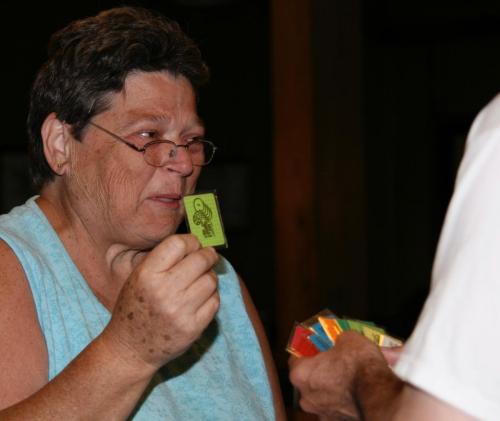
- As a colleague and friend of mine has said many times: *“Trust the experience.” We have seen people change over time when they have had environmental education experiences. For every person, their transformation occurs on their schedule, not on ours.
An Illustration: We have often played a simulation game, BAFA BAFA, a cross-cultural activity that deals with diversity, perceptions of other cultures, etc. At the beginning of the experience some see the simulation as silly. Over time however each student becomes very involved in following the rules of the culture in which they belong. At the conclusion of the game we process what they have found about others and themselves.
We find each time that all of us are transformed. By trusting the experience we have found people change in their way. If you want to change attitudes, you have to give the situation time to process within the constructs of each persons experience base. (BAFA BAFA is an extraordinary way of dealing with cultures, race, and how diversity is strength. This can be found at the following site: https://www.simulationtrainingsystems.com/corporate/products/bafa-bafa/)
An Aside: The person in the picture above, Linda Ramsey, loved environmental education. She was excited about any learning and was a thrill to have in our EE classrooms.
She attended several of our summer, weeklong, residential institutes over the years because she felt the experience summer revived her.
IN the above picture, Linda is playing the game BAFA BAFA.i She understood the concepts of community and diversity, prejudice and bigotry. She played BAFA several times with us, each time discovering things about diversity and herself.
She decided to take my Austrian class in sustainability because she wanted to see another perspective. Because she was an avid learner, loved environmental education, Linda saw the BAFA Simulation being a harbinger of why she wanted to learn more in Europe.
We had a free weekend in our class where persons could travel/explore on their own. There was one restriction for safety, people had to ftravel with at least one other person.
Linda came to me and asked if she could travel by herself. She explained she could fnot find someone to go with her by train to Auschwitz in Poland. She had read so much about this place, she wanted to have this “real-life” experience. Linda could not speak German, Czech, or Polish so I discouraged her doing this on her own, for the sake of her own safety. She was reasonable and understood what I was trying to say. So she went with a group to another place, perhaps Munich.
Have you ever had second thoughts about what you have disallowed/allowed in an environmental education experience? Loking back, telling Linda she should not go on that learning excursion was one. Linda Ramsey our steadfast and lovely human being, one who loved environmental education, a couple of years later died of cancer. She never went to Auschwitz and in retrospect I wish I did not dissaude her.
Sometimes, we as environmental educators, in our zeal to keep things controlled, in reflection, we wish we had done things differently. In the case of Linda, I wished I let Linda go to visit Auschwitz. It was one of her last wishes.
- It seems pretty silly to believe we can quantify the experiences others have in nature because they are so individual and personal.
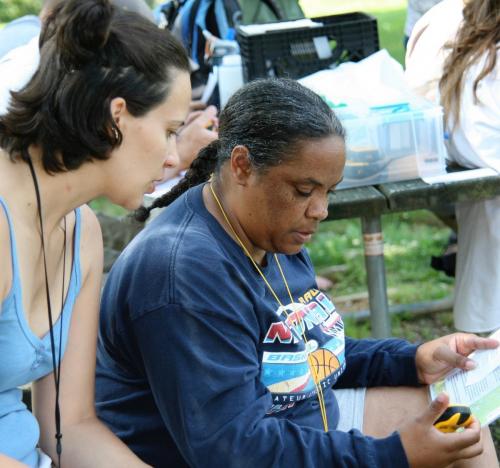
- As a environmental education teacher, it is exciting to be there with students, exploring and discovering with them. Being open to new groups of people learning environmental education, to a new community of learners. It is an amazing adventure.
Credits: Photography – Deb and Harry Spillman, Joe Baust
“Trust the Experience” – Dr. Terry Wilson
